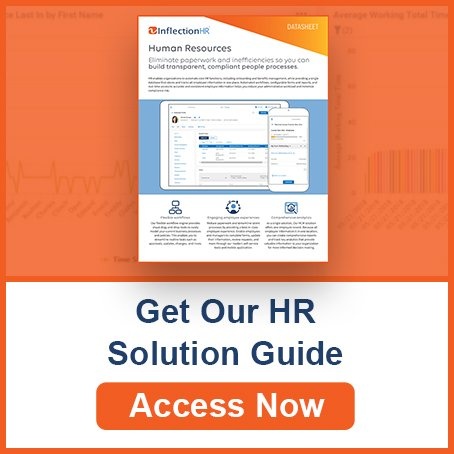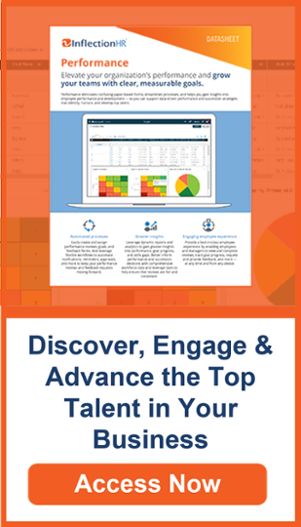HR's agenda has never been more challenging than it is today. On top of their regular workload, HR leaders have to deal with many modern workplace challenges that directly impact the organization's ability to operate efficiently and thrive.
This article walks you through the most prominent challenges HR professionals face today. You'll also discover practical ways to overcome them.
Ready?
1. Difficulty in Finding Ideal Candidates And Turning Them into Hires
The fierce competition for top talent in the labor market has made life difficult for HR. According to a recent survey, recruiting is a top challenge for businesses. Over 50% of HR professionals and employers who participated in the research said they are "extremely challenged" in finding top talent.
So what can your organization do to attract top talent and turn them into hires?
How to attract top talent
Identify what motivates high-quality candidates and offer personalized benefits to gain a competitive edge in the talent market.
For some job seekers, it's a fat salary. Other employees are motivated by flexible working conditions, job growth, an opportunity to make a difference in the world, or even a better work title.
2. Increased Pressure to Improve Diversity, Equity, and Inclusion (DEI)
Organizations are getting pressured to become more diverse. Failure to do so, businesses face several risks, including difficulty in attracting and retaining employee talent.
Job seekers and employees are overwhelmingly considering diversity, equity, and inclusion. Recent statistics say that 3 out of 4 job seekers prioritize DEI when evaluating job offers. Additionally, a CNBC survey found that about 80% of employees want to work for a business that values diversity, equity, and inclusion.
For this reason, DEI is one of the top human resource challenges. Gartner's study of more than 550 human resource professionals found that the rising pressure to enhance diversity has made DEI one of the top five priorities of HR leaders.
How to improve DEI
It's easy for a company to make a bold promise about diversity. But the real challenge is moving from promises to solid DEI efforts. So how do you improve diversity?
Combining a powerful, tech-driven solution with a human-centric approach can help your organization create a more equitable workplace. For example, a pre-employment testing platform allows HR to evaluate talent objectively and unbiasedly.
By side-stepping subjective hiring, a pre-employment tech platform inspires hiring decisions based solely on data-driven insights. It allows an organization to identify qualified talent based on verified traits and skill sets necessary for specific roles while avoiding conscious and unconscious bias in the hiring process.
After hiring, ensure the recruits have equal training opportunities, career development, and other benefits your business offers.
3. Dealing with Burnout and Retaining Talent
Organizations are at the most significant risk of losing their most talented and hard-working workers because of burnout. According to a report published in Career Development International, many highly engaged workers are burned out and ready to leave their organizations because of it.
Another 2020 survey reported that 62% of employees are burned out. When burned out, the same study revealed that 73% of respondents were open to new job opportunities. And for employees who have been with their current organization for less than twelve months, the number skyrockets to 77%.
These stats suggest that retaining talent is a huge challenge for HR leaders and employers, especially when the employees are worn out. So how can HR reduce burnout and decrease employee turnover?
How to reduce burnout and improve retention
Retaining high-quality workers starts with prioritizing employee wellness. Your organization can promote employee well-being in several ways:
- Provide flexible work conditions
- Infuse work-life balance into the company culture
- Ensure manageable workloads (e.g., divide projects into milestones and set realistic deadlines)
- Educate employees about the signs of burnout and how to avoid it
4. Improving Change Management
Change is the new norm in the business world. Gartner's statistics say that a typical company has undergone five significant organization-wide changes in the previous three years. And about 3 in 4 organizations are planning to undertake even more substantial changes in the next three years.
While change is constant in business environments, it's challenging for HR to manage it in an organization. Gartner's research says that 50% of change initiatives fail, and only 34% succeed. Harvard's insights also back this up: about 2 out of 3 transformation initiatives fail in most organizations.
What is it about change that makes it so difficult to manage? How can HR manage change effectively and improve employee buy-in?
How HR leaders can make change initiatives successful in their organizations
Ensure employees understand the change initiative, why it's essential, and how it benefits them and the organization. Depending on your change initiative, this can help increase employee engagement, discretionary effort, or productivity.
Additionally, HR leaders can make change initiatives tremendously successful by "walking the talk." McKinsey's research revealed that an organization is five times more likely to have successful change initiatives if leaders act as role models of what they expect from workers. That said, ensure the execution of change initiatives is rigorous and consistent.
5. Creating Effective Training and Development Strategies
Effective training and development programs can help organizations attract top talent, improve job satisfaction, increase productivity, and ultimately—earn more profit.
However, many HR leaders report that their skill development solutions are ineffective. In a study involving 2000 CHROs in the US, 55% said that their training and development capabilities are either "weak" or "extremely weak."
This affects the HRs' ability to create effective programs quickly enough to keep up with their organizations' evolving needs. How can they go about this?
How to create effective training and development programs
Most senior executives and HR invest in training primarily to make their employees and organizations more effective. The results from this approach have been a total disappointment for most organizations.
In a survey involving about 1500 senior managers at 50 organizations using the approach above, nearly 75% of them said they were not satisfied with their organization's training and development functions.
Your objective should be employees' personal growth to make your program highly effective. Workers are eager to acquire skills and knowledge that take them to the next level of their careers.
Instead of assuming what employees need to learn, collaborate with them in the program creation phase. They are more likely to engage with the training program if they feel included in the planning, research, and development process. The aim is to create programs tailored to employees' personal needs.
After creating a personalized program, regularly evaluate its progress. Are workers engaged? Then, make employee-centered improvements to the program.
To achieve this, gather feedback on how they think the program could improve. This could be through confidential interviews or anonymous surveys. The goal is to revamp your training and development programs based on employees' individual needs.
6. The New Hybrid Work Set Up
When the pandemic shuttered workplaces worldwide, businesses plunged into a sudden experiment with work-from-home. Nearly three years on, organizations nationwide have developed new working norms that consider flexible setups as the new normal of the modern working world.
That's because Americans embrace hybrid work models, where employees work partly in-office and remotely. 
In a McKinsey survey involving more than 25,000 Americans in different sectors of the economy, 58% reported working from home at least once per week. The study also revealed that when people are offered the opportunity to work flexibly, 87% take it.
As hybrid work setups are increasingly becoming common for many remote-capable workers, HR leaders are struggling to determine how to make it as engaging and successful as possible.
How HR can make hybrid setups successful
Creating an effective hybrid work setup starts with implementing what's working in your industry, changing what's not working, and adapting what you learn over time. That said, here are some of the things that make hybrid setups successful:
- Make work location and schedules transparent: Ensure everyone clearly understands when they work at home and when they are expected in the office.
- Provide remote tools and software: Work computers, meeting tools, and collaboration technologies should be available and optimally set up for remote work. Workers should understand the basics of using these tools for a smooth experience.
7. Promoting a Healthy Workplace
The modern worker expects more than just a big salary. The size of the paycheck undoubtedly influences employees' decision to work in a specific organization. However, they are equally interested in a healthy workplace. According to statistics on Forbes, well-being benefits are a top priority for six out of ten job seekers.
For this reason, HR must identify creative ways to support employees' physical and mental health. This makes workers more resistant to disruptions. The benefits are out there. But what's the most effective way to promote a healthy workplace?
How to promote a healthy work environment
An organization can offer wellness programs that promote mental and physical well-being. This may include education on stress management. And how to avoid burnout.
Need Help With Your Business's HR?
Outsourcing HR allows small businesses to free up time and focus more on core business activities. Employer Pass can handle all your HR functions, including:
- Core HR
- Employee handbooks
- Recruitment and talent acquisition
- Employee onboarding
- Succession planning
Contact us today for industry-leading HR services.


